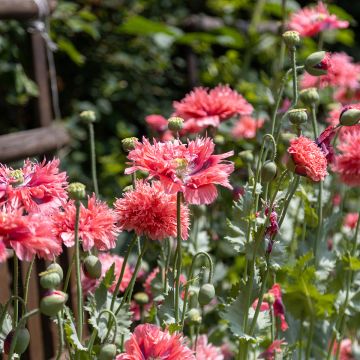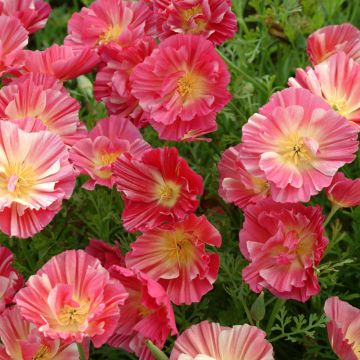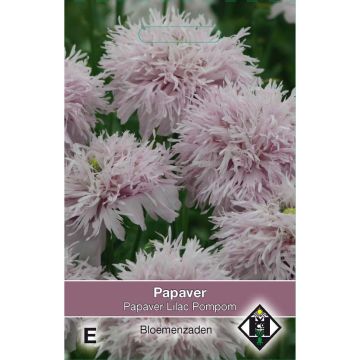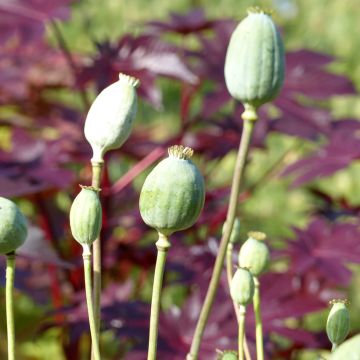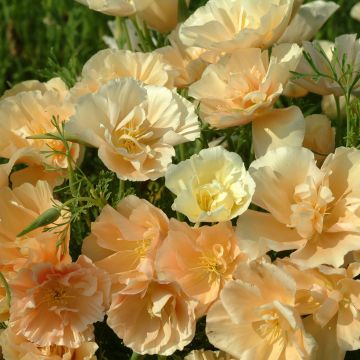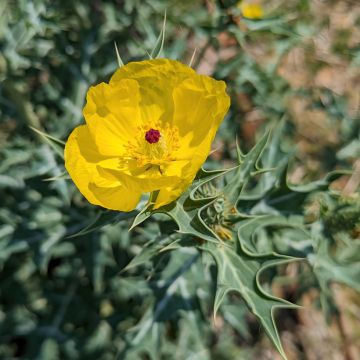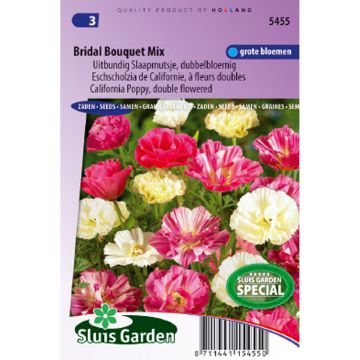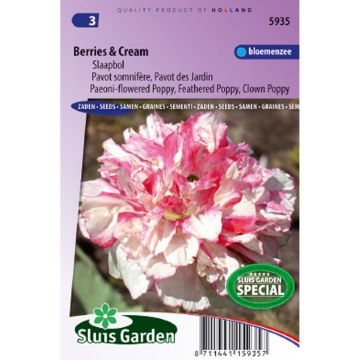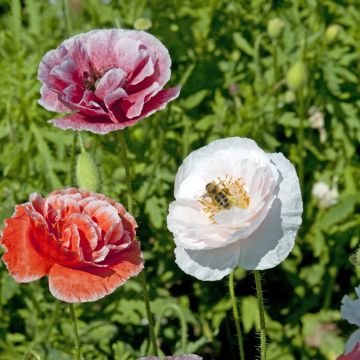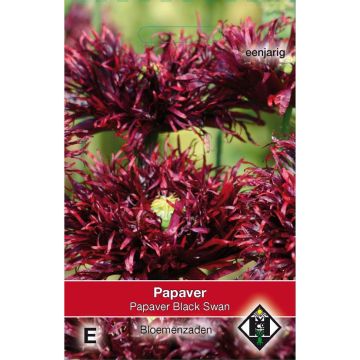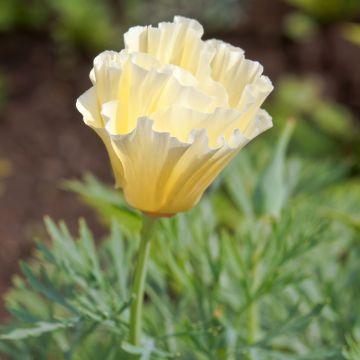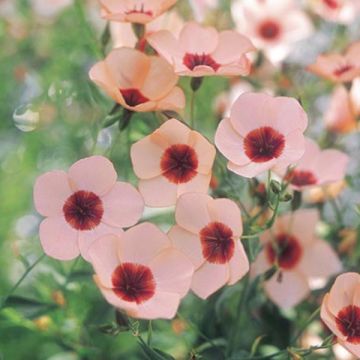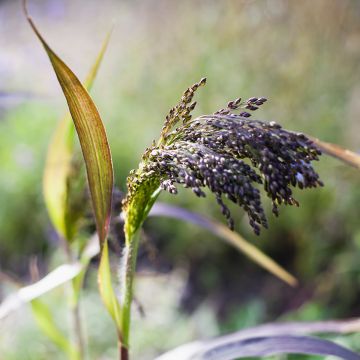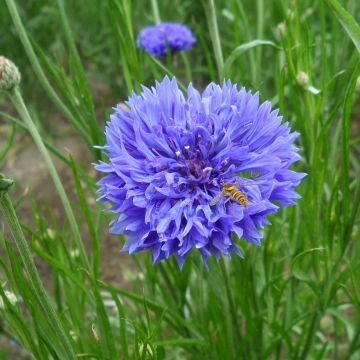Shipping country and language
Your country of residence may be:
Your country of residence is:
For a better user experience on our website, you can select:
Your shipping country:
Andorra
Austria
Belgium
Bulgaria
Canada
Chile
Croatia
Cyprus
Czechia
Denmark
Estonia
Finland
France
Germany
Greece
Hungary
Iceland
Ireland
Italy
Latvia
Lithuania
Luxembourg
Malta
Monaco
Netherlands
Poland
Portugal
Romania
Slovakia
Slovenia
Spain
Sweden
Switzerland
United Kingdom
We only deliver seed and bulb products to your country. If you add other products to your basket, they cannot be shipped.
Language:
French
German
Spanish
English
My Account
Hello
My wish lists
Plantfit
Log in / Register
Existing customer?
New customer?
Create an account to track your orders, access our customer service and, if you wish, make the most of our upcoming offers.
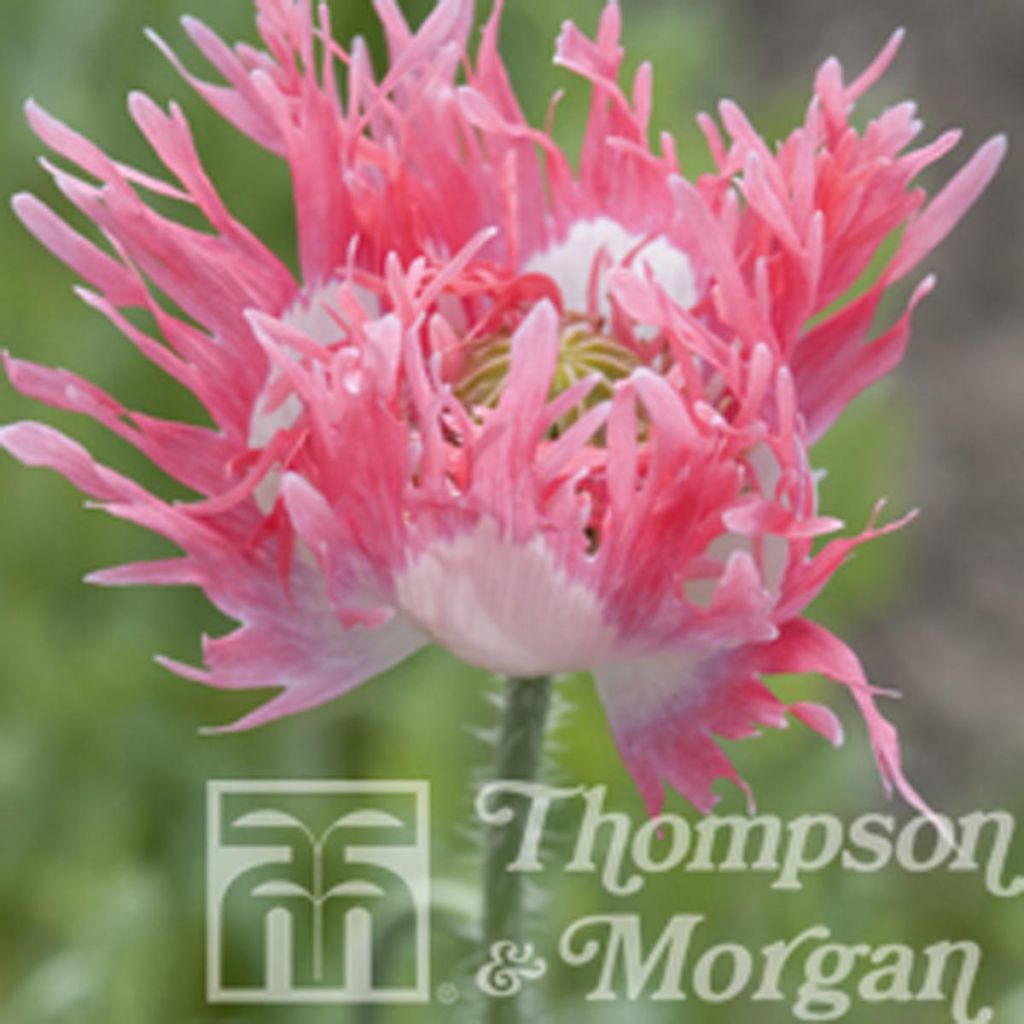

Opium Poppy Pink Fizz Seeds - Papaver somniferum
Opium Poppy Pink Fizz Seeds - Papaver somniferum
Papaver somniferum var.nigrum Pink Fizz
Peony Poppy, Paeony Flowered Poppy
Will be planted in May.
Danièle C., 22/04/2018
Why not try an alternative variety in stock?
View all →Order in the next for dispatch today!
Dispatch by letter from €3.90.
Delivery charge from €5.90 Oversize package delivery charge from €6.90.
More information
This item is not available in your country.
Schedule delivery date,
and select date in basket
This plant carries a 6 months recovery warranty
More information
We guarantee the quality of our plants for a full growing cycle, and will replace at our expense any plant that fails to recover under normal climatic and planting conditions.
Seed-only orders are dispatched by sealed envelope. The delivery charge for seed-only orders is €3.90.
Does this plant fit my garden?
Set up your Plantfit profile →
Description
The pink and white bicolour flowers of this annual poppy also called Papaver somniferum Pink Fizz, held atop tall stems emerging from silvery foliage, gently sway in the wind. Its ruffled flowers with frayed petals can be seen all summer long and are followed by fruit that are very ornamental in dried flower bouquets. Sow this undemanding plant, full of easy grace, directly in sunny beds.
The opium poppy 'Pink Fizz' is a recent and original horticultural variety, belonging to the Papaveraceae or poppy family. It is derived from Papaver somniferum var. nigrum, which is found in the mountains of Asia, but also in Europe, on limestone soils where poppies usually grow. This plant, which probably originated in the regions between the Mediterranean and Anatolia, has given rise to a multitude of varieties that have long been cultivated for ornamental purposes.
'Pink Fizz' displays magnificent, undulating, silvery foliage with beautifully lobed, elliptical leaves with scalloped margins. From its 30 to 40 cm wide clump of foliage, tall stems sprout up from June to August, bearing particularly refined and original, solitary flowers, 90 cm above the ground. Each flower is made up of four irregular petals that appear as silky, bright pink to pale pink fabric, shredded into fine tatters. The base of the petals are white whilst the centre of the flower, like that of poppies, is adorned with a cluster of black stamens. Summer blooms give way to a characteristic fruit, filled with small very ornamental black seeds which take on a slate blue sheen as it dries. Their aspect changes with the light because of the film of crystallized wax that protects their surfaces. Opium poppies have a taproot that is not very resistant to transplanting, so it is best to sow them in place.
Comfortable in sophisticated gardens, in medieval-type gardens and gardens without gardeners, opium poppies make it possible to quickly and effortlessly create oceans of infinitely delicate flowers that seem to dance on the silvery foam of their foliage, creating a stirring spectacle of vivid, dark or pastel colours. Although they are not very long-lasting in bouquets, the flowers of the opium poppy 'Pink Fizz' are extremely charming in flowerbeds when combined with the heavier flowers of peonies, tall daisies or with the moving strands of grasses. This annual plant, like the cosmos, has no equivalent for occupying the open sunny spaces between annuals or large perennials such as Helianthus, whose flowers take over later in the season.
Once the flowering period is over, the fruit remains providing a precious asset for dry bouquets, but also the poppy straw, which is often perceived in more wild areas as a majestic element of the garden or a somewhat enigmatic remnant of summer.
Flowering
Foliage
Plant habit
Botanical data
Papaver
somniferum var.nigrum
Pink Fizz
Papaveraceae
Peony Poppy, Paeony Flowered Poppy
Cultivar or hybrid
Other Poppy seeds
Planting and care
Sow poppy 'Pink Fizz' seeds directly outdoors, in spring or autumn. Choose a location in full sun with fertile, well-drained soil that has been well loosened beforehand. Sow the fine seeds just below the soil's surface. Water regularly, especially during dry periods. Germination usually takes 7 to 14 days. When the poppy seedlings are sufficiently large enough to be handled, thin them out to 30 cm apart. Garden poppies should not run out of water or food in the summer. They self-seed freely in the garden. Cut off spent flowers if you wish to avoid spontaneous seedlings. Important note: all poppies are poisonous. However, seeds produced by the species P. somniferum and P. paeoniflorum can be eaten. In general, the seeds are used in bakery recipes (breads, cakes...).
Sowing period
Intended location
- , onOrder confirmed
Reply from on Promesse de fleurs
Flower seeds
Haven't found what you were looking for?
Hardiness is the lowest winter temperature a plant can endure without suffering serious damage or even dying. However, hardiness is affected by location (a sheltered area, such as a patio), protection (winter cover) and soil type (hardiness is improved by well-drained soil).

Photo Sharing Terms & Conditions
In order to encourage gardeners to interact and share their experiences, Promesse de fleurs offers various media enabling content to be uploaded onto its Site - in particular via the ‘Photo sharing’ module.
The User agrees to refrain from:
- Posting any content that is illegal, prejudicial, insulting, racist, inciteful to hatred, revisionist, contrary to public decency, that infringes on privacy or on the privacy rights of third parties, in particular the publicity rights of persons and goods, intellectual property rights, or the right to privacy.
- Submitting content on behalf of a third party;
- Impersonate the identity of a third party and/or publish any personal information about a third party;
In general, the User undertakes to refrain from any unethical behaviour.
All Content (in particular text, comments, files, images, photos, videos, creative works, etc.), which may be subject to property or intellectual property rights, image or other private rights, shall remain the property of the User, subject to the limited rights granted by the terms of the licence granted by Promesse de fleurs as stated below. Users are at liberty to publish or not to publish such Content on the Site, notably via the ‘Photo Sharing’ facility, and accept that this Content shall be made public and freely accessible, notably on the Internet.
Users further acknowledge, undertake to have ,and guarantee that they hold all necessary rights and permissions to publish such material on the Site, in particular with regard to the legislation in force pertaining to any privacy, property, intellectual property, image, or contractual rights, or rights of any other nature. By publishing such Content on the Site, Users acknowledge accepting full liability as publishers of the Content within the meaning of the law, and grant Promesse de fleurs, free of charge, an inclusive, worldwide licence for the said Content for the entire duration of its publication, including all reproduction, representation, up/downloading, displaying, performing, transmission, and storage rights.
Users also grant permission for their name to be linked to the Content and accept that this link may not always be made available.
By engaging in posting material, Users consent to their Content becoming automatically accessible on the Internet, in particular on other sites and/or blogs and/or web pages of the Promesse de fleurs site, including in particular social pages and the Promesse de fleurs catalogue.
Users may secure the removal of entrusted content free of charge by issuing a simple request via our contact form.
The flowering period indicated on our website applies to countries and regions located in USDA zone 8 (France, the United Kingdom, Ireland, the Netherlands, etc.)
It will vary according to where you live:
- In zones 9 to 10 (Italy, Spain, Greece, etc.), flowering will occur about 2 to 4 weeks earlier.
- In zones 6 to 7 (Germany, Poland, Slovenia, and lower mountainous regions), flowering will be delayed by 2 to 3 weeks.
- In zone 5 (Central Europe, Scandinavia), blooming will be delayed by 3 to 5 weeks.
In temperate climates, pruning of spring-flowering shrubs (forsythia, spireas, etc.) should be done just after flowering.
Pruning of summer-flowering shrubs (Indian Lilac, Perovskia, etc.) can be done in winter or spring.
In cold regions as well as with frost-sensitive plants, avoid pruning too early when severe frosts may still occur.
The planting period indicated on our website applies to countries and regions located in USDA zone 8 (France, United Kingdom, Ireland, Netherlands).
It will vary according to where you live:
- In Mediterranean zones (Marseille, Madrid, Milan, etc.), autumn and winter are the best planting periods.
- In continental zones (Strasbourg, Munich, Vienna, etc.), delay planting by 2 to 3 weeks in spring and bring it forward by 2 to 4 weeks in autumn.
- In mountainous regions (the Alps, Pyrenees, Carpathians, etc.), it is best to plant in late spring (May-June) or late summer (August-September).
The harvesting period indicated on our website applies to countries and regions in USDA zone 8 (France, England, Ireland, the Netherlands).
In colder areas (Scandinavia, Poland, Austria...) fruit and vegetable harvests are likely to be delayed by 3-4 weeks.
In warmer areas (Italy, Spain, Greece, etc.), harvesting will probably take place earlier, depending on weather conditions.
The sowing periods indicated on our website apply to countries and regions within USDA Zone 8 (France, UK, Ireland, Netherlands).
In colder areas (Scandinavia, Poland, Austria...), delay any outdoor sowing by 3-4 weeks, or sow under glass.
In warmer climes (Italy, Spain, Greece, etc.), bring outdoor sowing forward by a few weeks.
